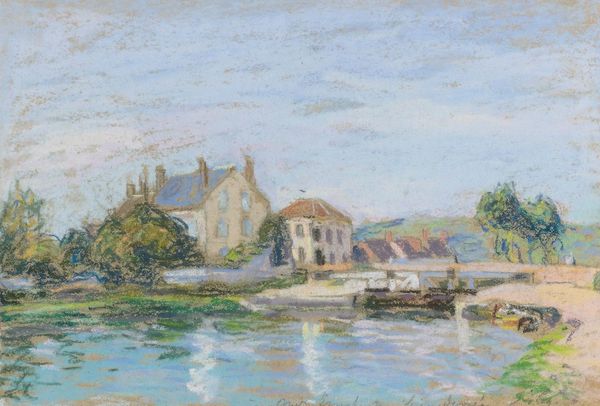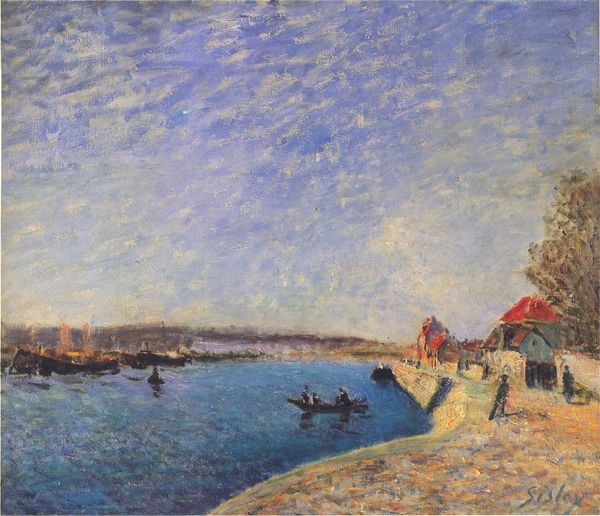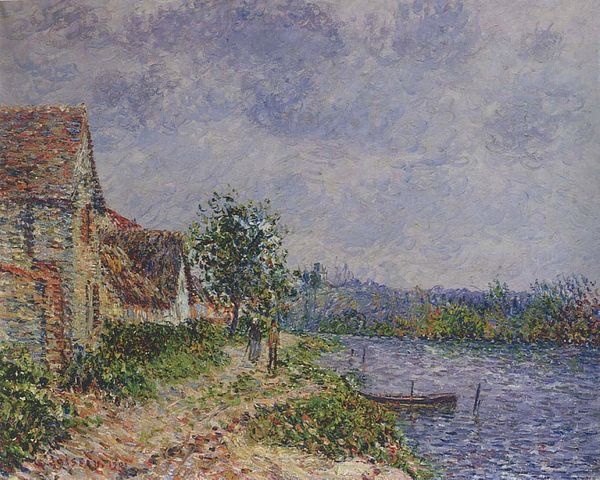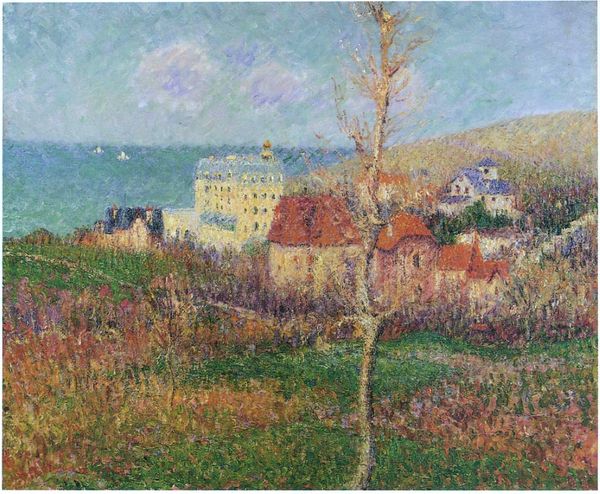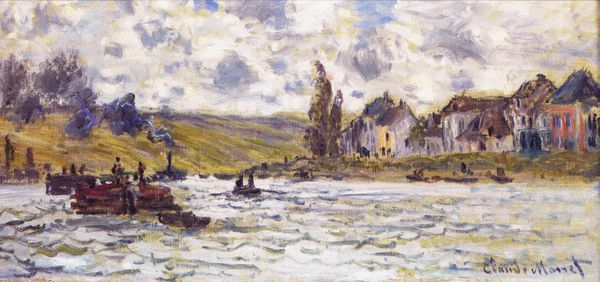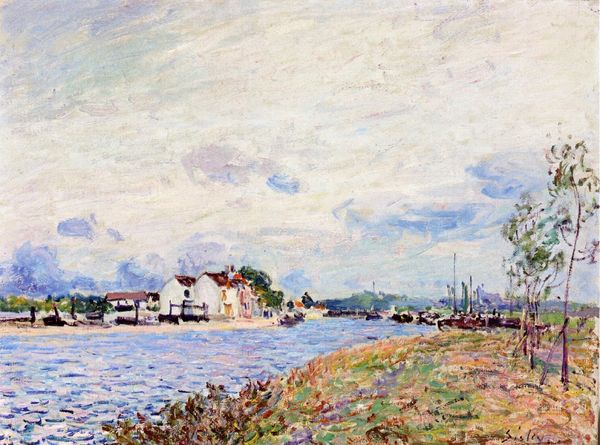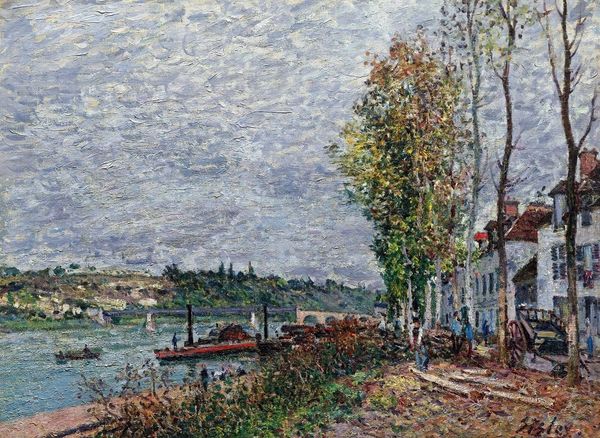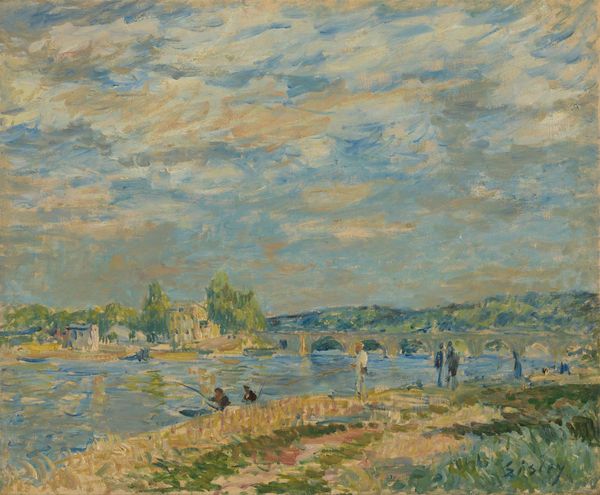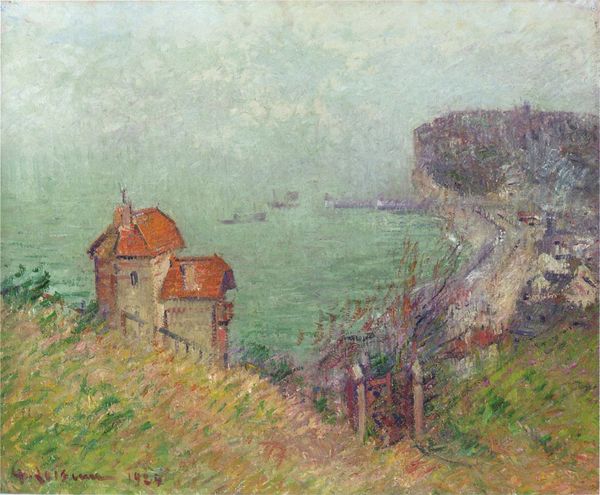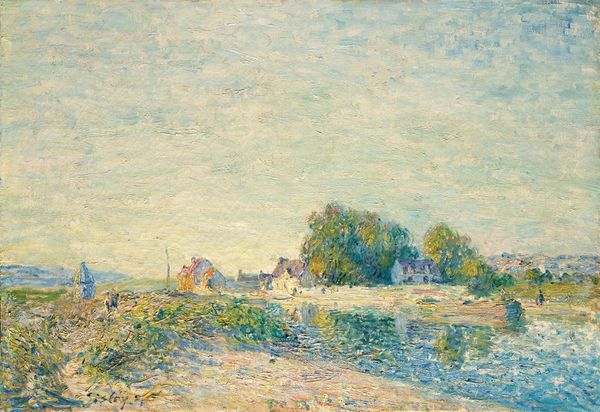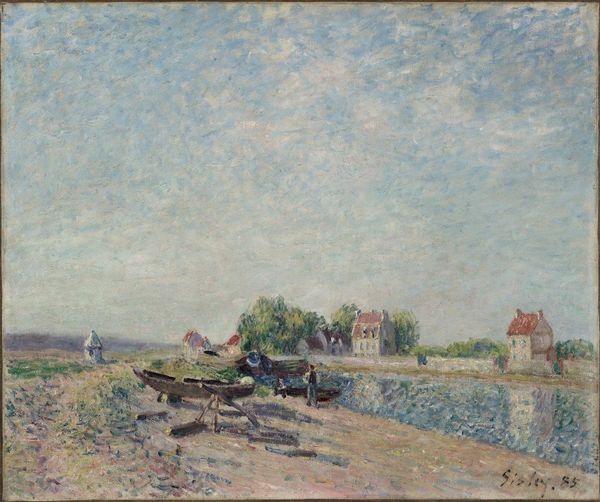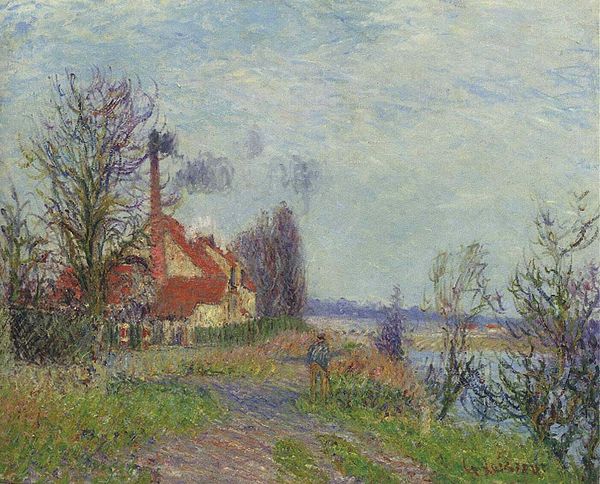
painting, plein-air, oil-paint, impasto
#
painting
#
impressionism
#
plein-air
#
oil-paint
#
landscape
#
river
#
impressionist landscape
#
impasto
#
cityscape
Dimensions: 38 x 54 cm
Copyright: Public domain
Curator: Alfred Sisley painted "The Loing at Moret" in 1881. The painting captures the atmosphere of a small riverside town, employing the artist's distinct impressionistic style in oil paint. Editor: Immediately, I’m struck by the painting’s melancholy—there’s a stillness to the water, almost mirroring the heavy sky. The house looks stoic, enduring… perhaps a bit lonely? Curator: Sisley often chose seemingly unremarkable locations like Moret, finding beauty in the everyday. He wasn't drawn to the dramatic landscapes of some of his contemporaries but was instead focused on depicting the nuances of light and atmosphere in these ordinary scenes. Notice how the reflections in the Loing subtly echo the forms on the riverbank. It's about the interplay of light. Editor: Yes, the light! It almost seems to soften the architecture, especially that building with the burnt-orange roof. It could be a fortified home along the river, maybe even a mill—I almost smell the damp earth and stone through the picture! But look closer at the sky – the brushstrokes feel so rapid, conveying the movement of clouds on what feels like an early autumn day. Curator: Indeed, he had a masterful command of translating fleeting atmospheric conditions, the very essence of impressionism. What some would have considered plain and mundane, Sisley managed to turn into poetry. He wasn’t interested in making grand, historical statements, but rather in recording the immediate sensory experience. This spot alongside the Loing actually became one of Sisley's favored haunts, with the village of Moret featuring across scores of other landscapes. Editor: Which highlights, to me, how loaded this seemingly 'simple' scene is—this wasn't just a one-off snapshot, but a place the artist returned to time and again, invested in documenting not only light, but something akin to emotional geography, right? The fact that we now encounter this painting outside of France changes things. Where would Sisley have imagined "The Loing at Moret" would end up? I mean, what stories it carries after leaving its birthplace… Curator: It really makes you wonder. Well, considering the artist's dedication to capturing the ephemeral quality of light and atmosphere, he likely hoped the artwork would serve as a portal, transporting viewers to that precise moment in time on the banks of the Loing. A beautiful, eternal return.
Comments
No comments
Be the first to comment and join the conversation on the ultimate creative platform.

